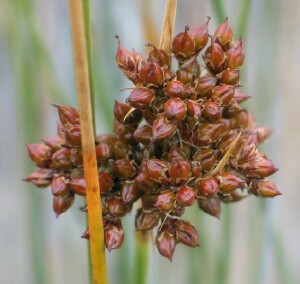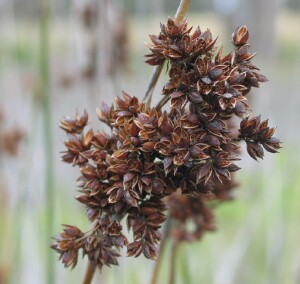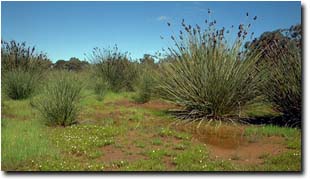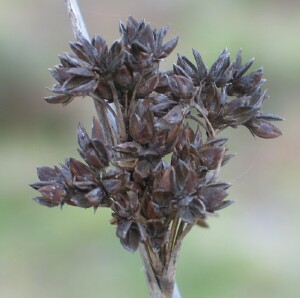Spiny Rush
Back | Salinity Indicator Plants Home | Common name home | Scientific name home | Photo Gallery | Glossary
| Spiny Rush photos |
| Scientific Name: | Juncus acutus | 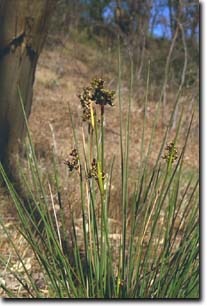 Spiny Rush | ||||||||
Other Common Name: | Sharp Rush | |||||||||
Status: | Native to Europe, Africa and the Americas. Naturalised in Victoria, Western Australia, South Australia, New South Wales and New Zealand. A serious environmental weed and declared noxious weed for Victoria. | |||||||||
Plant Description: | Large, tough, perennial rush to 150 cm tall, in distinctive clumps and with short rhizomes. Hard, narrow cylindrical leaves about 130 cm long and 4 mm wide. Leaves and flower stems look similar, arise from a dense, compact base and both have pithy centres. Leaves are dark green with a sharply pointed tip. Bracts which arise from below the flower clusters but extend above the clusters are similarly sharp-pointed. Dense clusters of small reddish-brown flowers, or small hard reddish-brown nut-like fruits, near the tops of the stems. New plants do not flower until at least 2 years old. Flowers in spring and summer. | |||||||||
Habitat: | Found in a wide range of soils. Widespread, from saline coastal flats to inland swamps and mine dumps and irrigation drains. Tends to favour depressions and moist areas. Does not require wet soil once established.
| |||||||||
Comments: | May form impenetrable thickets. Often very difficult to get rid of. Unpalatable to livestock. This species is very similar to the Australian Native Sea Rush (Juncus kraussii) which grows in similar environments but differs in having larger seeds (seed capsules 4-6 mm long and golden-brown coloured), very dense flower clusters and dark brown cataphylls (short leaf sheaths) at the base of the clump. |
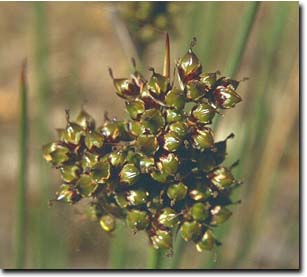 Young flower cluster of Spiny Rush | 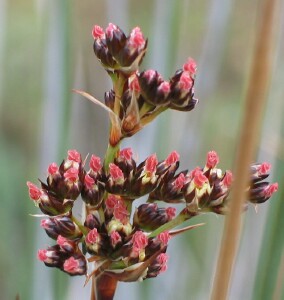 Flowering cluster of Spiny Rush showing red anthers Photo: A J Brown |
|
|
|
|
Also see "Spiny Rush" on the Invasive Plants Section of VRO.
Related Links
- Weeds Identification Note - Spiny Rush (external link)

